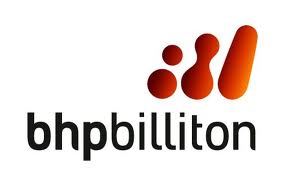 October 27, 2014
October 27, 2014
BHP Billiton today explained how with a simpler portfolio it will maximise value and shareholder returns by reducing operating costs and improving capital efficiency.
BHP Billiton Chief Executive Officer, Andrew Mackenzie, said: “We are confident that our productivity drive will be accelerated by the demerger proposal we announced in August. A simpler portfolio, focused on our 19 core1 assets, will retain an optimal level of diversification while generating even stronger growth and margins.”
Production2 from the core portfolio is expected to grow by 23 per cent over the two years to the end of the 2015 financial year as the Company completes high-return, brownfield projects and embeds productivity-led volume gains. BHP Billiton remains on track to meet all 2015 financial year production guidance.
The Group has cut unit costs across all its mineral businesses and expects further reductions across the core portfolio. Unit costs3 at Western Australia Iron Ore fell 12 per cent in the second half of the 2014 financial year and a 25 per cent reduction is expected in the medium term.
Production costs in the Copper business have also fallen despite grade decline. Escondida unit costs4 declined by 22 per cent in the last two years and we forecast another five per cent reduction in the 2015 financial year.
At Queensland Coal, a 24 per cent reduction in operating costs5 has re-established the business as a leader in its industry. We expect to reduce unit costs by a further 10 per cent, to below US$90 per tonne, in the 2015 financial year as we continue to increase throughput from our installed infrastructure.
In Petroleum, forensic benchmarking of every component of our Onshore US drilling program has significantly improved capital productivity. Drilling costs in the Black Hawk fell 16 per cent in the 2014 financial year. Onshore US operating costs6 are also expected to improve with a 10 per cent reduction forecast in the 2015 financial year.
BHP Billiton expects to embed a minimum of US$3.5 billion in annualised productivity gains7 by the end of the 2017 financial year with more than US$2.3 billion to come from cash cost savings.
Our longstanding capital management framework defines four priorities for cash flow: to retain a solid A credit rating to maintain a strong balance sheet through the cycle; to at least maintain or grow our progressive base dividend in every reporting period; to invest selectively in high-return opportunities through the cycle; and to return excess capital to shareholders in the most efficient way.
Mr Mackenzie said: “We see our capital management strategy as a precondition to maximising shareholder value. It has allowed us to invest through the cycle and grow our dividend at an average annual rate of 17 per cent over the last decade without interruption.
“Our core portfolio includes a suite of development options that are expected to generate an average rate of return8 of over 20 per cent. As our capital efficiency improves we will be able to create more value for less investment. We believe we can significantly reduce annual capital expenditure relative to our current plans while maintaining our growth trajectory.”
Our focus in Iron Ore and Coal is to safely stretch the potential of our existing infrastructure and equipment. In Copper, BHP Billiton holds many of the industry’s best brownfield development options with projects under evaluation at Escondida, Spence and Olympic Dam.
In Petroleum, the Group continues to prioritise value over volume which dictates a focus on Onshore US liquids development and investment in high-return brownfield projects across the Conventional business.
Mr Mackenzie said: “In the Eagle Ford and Permian we are forecasting liquids production of approximately 200 thousand barrels per day by the 2017 financial year. This is expected to generate significant value as investments in our liquids-rich Onshore US wells typically generate returns9 of over 50 per cent.
“In time, we expect to fully develop our Haynesville gas field given the quality of our acreage. As we look to improve the balance of liquids and gas across our Petroleum portfolio we have initiated the marketing our Fayetteville acreage. However, we will only divest the field if it maximises value for shareholders.”
In closing, Mr Mackenzie said: “Our strategy, including our commitment to a strong balance sheet, has worked well for our owners. We have delivered a total shareholder return of 394 per cent over the last decade including US$64 billion in dividends and buy-backs. By safely improving operating and capital efficiency we will maximise value and increase cash returns to our shareholders. Improving our competitiveness will benefit shareholders and the local communities and economies in which we operate.”
